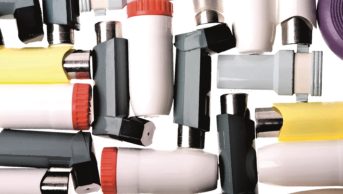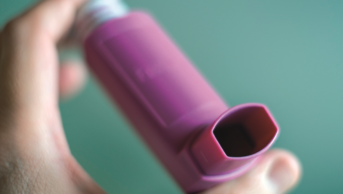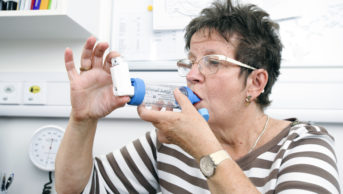This content was published in 2009. We do not recommend that you take any clinical decisions based on this information without first ensuring you have checked the latest guidance.
In short
Ideally, inhaler devices should only be prescribed after a patient has received training in the use of the device and has, subsequently, demonstrated satisfactory inhaler technique.
Patients should be encouraged to bring their inhalers to every respiratory clinic appointment so that their inhaler technique can be checked.
Also, during discussions with patients about their medicines (eg, during medicines use reviews), pharmacists should make a point of checking inhaler technique. This will facilitate patients’ acceptance of treatment and their understanding of how to use the inhaler device.
If the patient is unable to use a particular device, an alternative should be sought
Inhaled medicines are an integral component of asthma and chronic obstructive pulmonary disease (COPD) management.
Despite this, little advice is provided in guidelines regarding the selection of an appropriate inhaler device.
The devices used to deliver medicines to the lungs are, in many respects, as important as the medicines themselves. If drug delivery is inefficient, or if the patient struggles to learn or remember how to use the device, the effectiveness of therapy will be reduced[1].
Several factors need to be considered when choosing an inhaler device:
- Patient’s age — most children under five years of age cannot generate sufficient suction to use dry-powder inhalers, while some elderly patients cannot use metered-dose inhalers due to a lack of coordination or dexterity;
- Availability — no medicines are available in all inhalation devices;
- Patient’s preference — ideally, patients should try a range of devices before choosing the one with which they are most comfortable
- Physical or cognitive impairment — a patient with arthritic hands might not have sufficient dexterity to, for example, depress the canister on a metered-dose inhaler;
- Local formularies might show preference for one device over another (eg, because of cost).
There are several devices currently available. The advantages, disadvantages and usage instructions for the most common devices are described in the Box (p323).
In a study assessing inhaler use and patient preference, only 79% of patients could use a pressurised metered-dose inhaler properly — even after being given full instructions — yet such devices remain the most commonly prescribed[3].
Breath-actuated inhalers emerged as the preferred device for most patients and were found to be used appropriately by over 90% of patients.
Good inhaler technique is vital. Poor drug delivery can decrease disease control and increase inhaler use. This has financial implications in terms of the cost of extra medicines used, and might result in additional GP visits or hospital admissions.
Any time spent educating patients on the use of their inhalers could, potentially, reduce these costs.
Suman Gupta is senior pharmacist for respiratory services at Stepping Hill Hospital, Stockport. E: suman.gupta@stockport.nhs.uk
References
- National Collaborating Centre for Chronic Conditions. Chronic obstructive pulmonary disease. National clinical guideline on management of chronic obstructive pulmonary disease in adults in primary and secondary care. Thorax 2004;59(Supp 1):1–232.
- Lipworth BJ. New perspectives on inhaled drug delivery and systemic bioactivity. Thorax 1995;50:105–10.
- Lenney J, Innes J, Crompton G. Inappropriate inhaler use: assessment of use and patient preference of seven inhalation devices. EDICI. Respiratory Medicine 2000;94:496–500.
NOTE: Clinical Pharmacist PRACTICE TOOLS do not constitute formal practice guidance. Articles in the series have been commissioned from independent authors who have summarised useful clinical skills.


